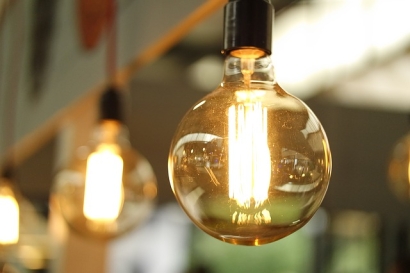
Next time you want to upgrade your home to make it more energy-efficient, consider choosing one of these proven-effective improvement projects.
The main purpose of insulation is to provide resistance to heat flow, ultimately making your home more comfortable and reducing your heating and cooling costs.
Remember that some insulation improvement projects require hiring a professional, while others can be done DIY-style. Insulate your attic first, as this area of your home experiences the most heat loss.
Another upgrade is replacing your home's old windows, regardless of where they're located. Replacing your old windows can increase your home's energy efficiency by 30%, so other home updates might not even be necessary.
Old windows and doors are not effective at retaining indoor temperatures. Consider upgrading your home to green windows, which are more energy-efficient and typically the same price as standard windows.
An inexpensive way to upgrade your home for energy efficiency is by purchasing and applying caulk and weatherstripping. Both products are relatively affordable and it's a straightforward process.
Buy new weatherstripping and exterior-grade caulking to seal up any cracks around or near doors, windows or wherever there are gaps outside your home.
You can increase your home's energy efficiency by purchasing one of the many smart thermostats on the market. From Google Nest and Ecobee to Amazon and Honeywell, there are several smart home brands you can choose from to buy your new smart thermostat.
These devices allow you to remotely control your home's temperature and choose energy-efficient settings to reduce your total energy consumption.
If you're still using traditional light bulbs, consider switching to LED, energy-efficient bulbs. These special bulbs have a long life span, are more durable, perform better and are considered the most energy-efficient light source you can get. Additionally, LED bulbs are safer because they are much cooler, reducing the risk of combustion or burnt fingers.
These five home improvements can result in reduced energy costs and a smaller carbon footprint, two important considerations for many homeowners as energy costs continue to rise around the country each year. In addition to these benefits, an energy-efficient home often has a higher value than its less-efficient counterparts.
It might seem counterintuitive to ventilate your attic if you just spent money insulating the space. However, attic ventilation is a key quality of an energy-efficient, durable home, according to ENERGYSTAR.
In the cold winter months, allowing outdoor air flow through your attic can help prevent ice damming, which occurs when melted snow from your roof refreezes in the gutters and can cause damage to your roof. In the summer, a well-ventilated attic moves super-heated air out of the attic, which protects roof shingles and prevents excess moisture from building up.
Using ceiling fans to cool off your home in the warmer months is a great way to improve your home’s energy efficiency. Today’s smart ceiling fans are a wise investment — you can control them from your smartphone using a compatible mobile app, and they keep air flowing in your home without using the air conditioner or HVAC system.
Some smart ceiling fans are compatible with Amazon Alexa or Google Assistant so you can turn your fan on and off using voice commands. There are many brands of smart ceiling fans to choose from, so take your time shopping to find the right ones for your home.
When you’re choosing a new water heater, your ultimate goal you should be to find an option that provides enough hot water for your family and is also environmentally friendly. There are a few different types of water heaters to choose from:
Heating water in your home accounts for around 20% of your household budget, and heat pump water heaters (HPWHs) are likely your most energy-efficient option.
Energy-efficient heating, ventilation and cooling (HVAC) systems use less energy and can reduce your home’s energy bills each month. There are two types of energy-efficient HVAC systems — SEER (seasonal energy efficiency ratio) or AFUE (annual fuel utilization efficiency).
Most new HVAC system models are either SEER or AFUE rated. You can also browse for ENERGYSTAR-approved HVAC systems to install in your home to make it more efficient.
Last but not least, adding solar panels to your home can make a huge difference in efficiency. Since solar energy is renewable, it’s a much more sustainable energy source for your home. You can often generate enough electricity from solar panels to power your home, and reduce your energy bills significantly.
Solar panel installations often have high upfront costs, but the long term financial benefits are well-worth the initial investment. Keep in mind that solar installations will inevitably change the aesthetics of your home, but the cost savings are too major to ignore.
If you make a couple of these home upgrades, you’ll be well on your way to creating a more energy-efficient home. Now is the time to minimize your home’s carbon footprint by incorporating new energy-efficient technologies and systems, especially as the climate change crisis becomes more pressing.
More consumers are focused on sustainability than ever, including potential homebuyers. Upgrading your home with energy-efficient products can help reduce your energy spending, minimize your carbon footprint and benefit the environment. Consider making some of the above improvements, but ensure these projects fit your budget.

